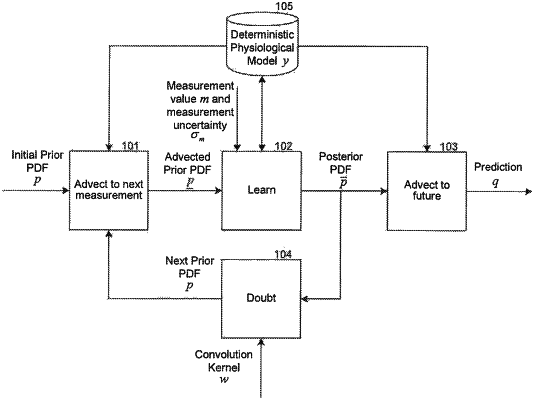| CPC G16H 50/50 (2018.01) [G06N 7/01 (2023.01); G16B 5/20 (2019.02); G16H 50/20 (2018.01)] | 15 Claims |

|
1. A method performed by one or more computing systems to model behavior of a biological system, the method comprising:
accessing a cell aging component for modeling dynamics of cell aging of cells of the biological system using a differential equation to model the dynamics of cell aging over time, the cell aging component having a cell age distribution of cells of the biological system, a cell birth rate, a cell reduction rate, and a cell aging rate of the biological system, the differential equation representing effect of the cell birth rate, the cell reduction rate, and the cell aging rate on the cell age distribution;
accessing a current cell age distribution of the cells of an organ corresponding to a current simulation time;
sampling a current cell birth rate, a current cell reduction rate, and a current cell aging rate corresponding to the current simulation time from one or more prior probability density functions for the cell birth rate, the cell reduction rate, and the cell aging rate; and
simulating behavior of the biological system from the current simulation time to a next simulation time to generate a next cell age distribution at the next simulation time by solving the differential equation based on the current cell age distribution, the current cell birth rate, the current cell reduction rate, and the current cell aging rate.
|